Unai Huete Beloki - The Art of Site Reliability Engineering (SRE) with Azure: Building and Deploying Applications That Endure
Here you can read online Unai Huete Beloki - The Art of Site Reliability Engineering (SRE) with Azure: Building and Deploying Applications That Endure full text of the book (entire story) in english for free. Download pdf and epub, get meaning, cover and reviews about this ebook. year: 2022, publisher: Apress, genre: Romance novel. Description of the work, (preface) as well as reviews are available. Best literature library LitArk.com created for fans of good reading and offers a wide selection of genres:
Romance novel
Science fiction
Adventure
Detective
Science
History
Home and family
Prose
Art
Politics
Computer
Non-fiction
Religion
Business
Children
Humor
Choose a favorite category and find really read worthwhile books. Enjoy immersion in the world of imagination, feel the emotions of the characters or learn something new for yourself, make an fascinating discovery.
- Book:The Art of Site Reliability Engineering (SRE) with Azure: Building and Deploying Applications That Endure
- Author:
- Publisher:Apress
- Genre:
- Year:2022
- Rating:4 / 5
- Favourites:Add to favourites
- Your mark:
The Art of Site Reliability Engineering (SRE) with Azure: Building and Deploying Applications That Endure: summary, description and annotation
We offer to read an annotation, description, summary or preface (depends on what the author of the book "The Art of Site Reliability Engineering (SRE) with Azure: Building and Deploying Applications That Endure" wrote himself). If you haven't found the necessary information about the book — write in the comments, we will try to find it.
Gain a foundational understanding of SRE and learn its basic concepts and architectural best practices for deploying Azure IaaS, PaaS, and microservices-based resilient architectures.
The book starts with the base concepts of SRE operations and developer needs, followed by definitions and acronyms of Service Level Agreements in real-world scenarios. Moving forward, you will learn how to build resilient IaaS solutions, PaaS solutions, and microservices architecture in Azure. Here you will go through Azure reference architecture for high-available storage, networking and virtual machine computing, describing Availability Sets and Zones and Scale Sets as main scenarios. You will explore similar reference architectures for Platform Services such as App Services with Web Apps, and work with data solutions like Azure SQL and Azure Cosmos DB.
Next, you will learn automation to enable SRE with Azure DevOps Pipelines and GitHub Actions. Youll also gain an understanding of how an open culture around post-mortems dramatically helps in optimizing SRE and the overall company culture around managing and running IT systems and application workloads. Youll be exposed to incent management and monitoring practices, by making use of Azure Monitor/Log Analytics/Grafana, which forms the foundation of monitoring Azure and Hybrid-running workloads.
As an extra, the book covers two new testing solutions: Azure Chaos Studio and Azure Load Testing. These solutions will make it easier to test the resilience of your services.
After reading this book, you will understand the underlying concepts of SRE and its implementation using Azure public cloud.
What Will You Learn:
- Learn SRE definitions and metrics like SLI/SLO/SLA, Error Budget, toil, MTTR, MTTF, and MTBF
- Understand Azure Well-Architected Framework (WAF) and Disaster Recovery scenarios on Azure
- Understand resiliency and how to design resilient solutions in Azure for different architecture types and services
- Master core DevOps concepts and the difference between SRE and tools like Azure DevOps and GitHub
- Utilize Azure observability tools like Azure Monitor, Application Insights, KQL or Grafana
- Understand Incident Response and Blameless Post-Mortems and how to improve collaboration using ChatOps practices with Microsoft tools
Who Is This Book For:
IT operations administrators, engineers, security team members, as well as developers or DevOps engineers.
Unai Huete Beloki: author's other books
Who wrote The Art of Site Reliability Engineering (SRE) with Azure: Building and Deploying Applications That Endure? Find out the surname, the name of the author of the book and a list of all author's works by series.

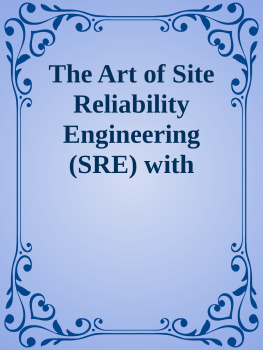

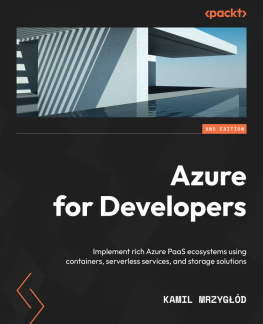
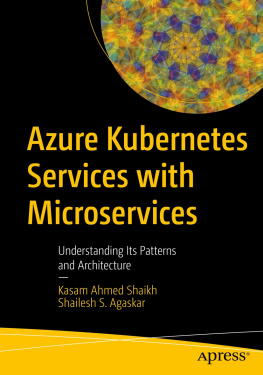

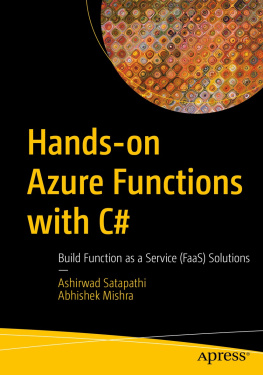
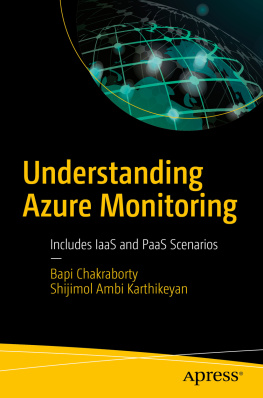

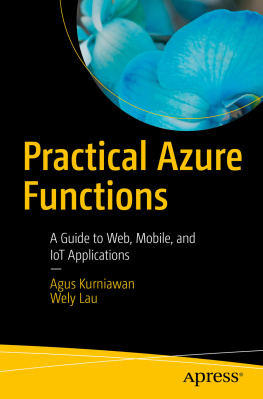
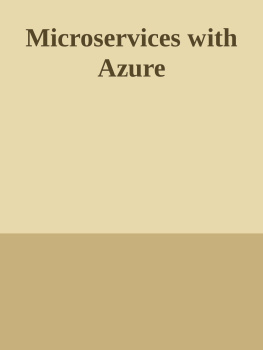
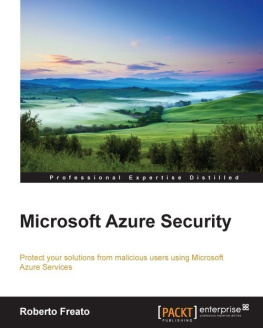
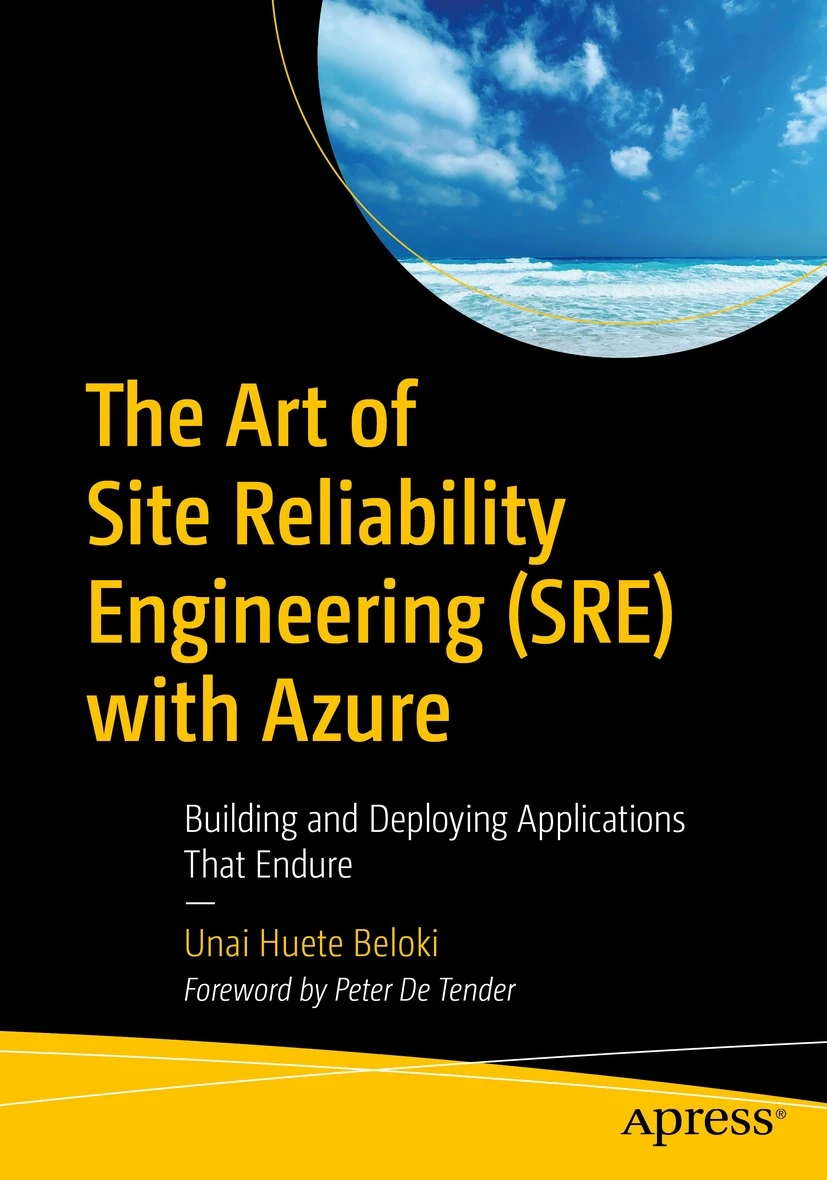 The Art of SiteReliability Engineering(SRE) with AzureBuilding and DeployingApplications That EndureUnai Huete BelokiForeword by Peter De TenderThe Art of Site Reliability Engineering (SRE) with Azure: Building and DeployingApplications That Endure Unai Huete Beloki San Sebastian, Spain ISBN-13 (pbk): 978-1-4842-8703-3 ISBN-13 (electronic): 978-1-4842-8704-0 https://doi.org/10.1007/978-1-4842-8704-0 Copyright 2022 by Unai Huete Beloki This work is subject to copyright. All rights are reserved by the Publisher, whether the whole or part of the material is concerned, specifically the rights of translation, reprinting, reuse of illustrations, recitation, broadcasting, reproduction on microfilms or in any other physical way, and transmission or information storage and retrieval, electronic adaptation, computer software, or by similar or dissimilar methodology now known or hereafter developed. Trademarked names, logos, and images may appear in this book. Rather than use a trademark symbol with every occurrence of a trademarked name, logo, or image we use the names, logos, and images only in an editorial fashion and to the benefit of the trademark owner, with no intention of infringement of the trademark. The use in this publication of trade names, trademarks, service marks, and similar terms, even if they are not identified as such, is not to be taken as an expression of opinion as to whether or not they are subject to proprietary rights. While the advice and information in this book are believed to be true and accurate at the date of publication, neither the authors nor the editors nor the publisher can accept any legal responsibility for any errors or omissions that may be made.
The Art of SiteReliability Engineering(SRE) with AzureBuilding and DeployingApplications That EndureUnai Huete BelokiForeword by Peter De TenderThe Art of Site Reliability Engineering (SRE) with Azure: Building and DeployingApplications That Endure Unai Huete Beloki San Sebastian, Spain ISBN-13 (pbk): 978-1-4842-8703-3 ISBN-13 (electronic): 978-1-4842-8704-0 https://doi.org/10.1007/978-1-4842-8704-0 Copyright 2022 by Unai Huete Beloki This work is subject to copyright. All rights are reserved by the Publisher, whether the whole or part of the material is concerned, specifically the rights of translation, reprinting, reuse of illustrations, recitation, broadcasting, reproduction on microfilms or in any other physical way, and transmission or information storage and retrieval, electronic adaptation, computer software, or by similar or dissimilar methodology now known or hereafter developed. Trademarked names, logos, and images may appear in this book. Rather than use a trademark symbol with every occurrence of a trademarked name, logo, or image we use the names, logos, and images only in an editorial fashion and to the benefit of the trademark owner, with no intention of infringement of the trademark. The use in this publication of trade names, trademarks, service marks, and similar terms, even if they are not identified as such, is not to be taken as an expression of opinion as to whether or not they are subject to proprietary rights. While the advice and information in this book are believed to be true and accurate at the date of publication, neither the authors nor the editors nor the publisher can accept any legal responsibility for any errors or omissions that may be made. About the AuthorUnai HueteBeloki is a Microsoft Technical Trainer (MTT) working at Microsoft, based in San Sebastian (Spain). From February 2017 to July 2020, he worked as a PFE (Premier Field Engineer), offering support and education as a DevOps expert to Microsoft customers all around EMEA, mainly focused on the following technologies: GitHub, Azure DevOps, Azure Cloud Architecture and Monitoring, and Azure AI/Cognitive Services. Since July 2020, he has worked as a Microsoft Technical Trainer (MTT) on the technologies mentioned above and served as the MTT lead for the AZ-400 DevOps Solutions exam, helping shape the content of the exam/course. In his free time, he loves traveling, water sports like surfing and spearfishing, and mountain-related activities such as MTB and snowboarding. vii
About the AuthorUnai HueteBeloki is a Microsoft Technical Trainer (MTT) working at Microsoft, based in San Sebastian (Spain). From February 2017 to July 2020, he worked as a PFE (Premier Field Engineer), offering support and education as a DevOps expert to Microsoft customers all around EMEA, mainly focused on the following technologies: GitHub, Azure DevOps, Azure Cloud Architecture and Monitoring, and Azure AI/Cognitive Services. Since July 2020, he has worked as a Microsoft Technical Trainer (MTT) on the technologies mentioned above and served as the MTT lead for the AZ-400 DevOps Solutions exam, helping shape the content of the exam/course. In his free time, he loves traveling, water sports like surfing and spearfishing, and mountain-related activities such as MTB and snowboarding. vii  About the Technical ReviewerPeter DeTender has more than 20 years experience in architecting and deploying Microsoft data center technologies, having started his career on Windows NT4 Server in 1996. Since early 2012, he started shifting to cloud technologies (Microsoft 365, Intune) and quickly moved to the Azure platform, working as a cloud solution architect and trainer, out of his own company.
About the Technical ReviewerPeter DeTender has more than 20 years experience in architecting and deploying Microsoft data center technologies, having started his career on Windows NT4 Server in 1996. Since early 2012, he started shifting to cloud technologies (Microsoft 365, Intune) and quickly moved to the Azure platform, working as a cloud solution architect and trainer, out of his own company.